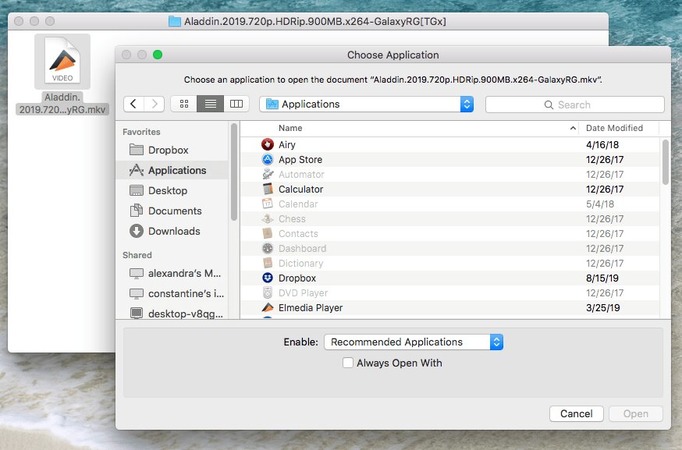

And again, the most prudent among us may keep a Mac around that’s capable of running Mojave, just in case a few years from now we find ourselves needing to run a 32-bit app or open a video file encoded with an obscure codec.
#Mac search just for video files upgrade#
It might be worth a look before you upgrade any Macs beyond macOS 10.14. That might be one way to quickly determine if you have any files in these ancient formats. Among the attributes that’s available is one called Codecs, and when I selected that I was able to find a few ancient video files encoded with Cinepak, one of the formats that will be deprecated in this fall’s release.

That first pop-up contains a pretty amazing option, “Other…”, that when selected will take you to an enormous list of metadata that Spotlight catalogs based on the contents of the files on your Mac. Or set “Last opened date” to within the last x days. So for example, you can set “Kind” to “PDF” and constrain searches to PDFs. If you start a new Finder search by typing Command-F, you’ll see that you can constrain your search by all sorts of variables, as chosen via pop-up items. But one little-known feature of Spotlight might help. It would sure be nice if someone came up with a utility that knew all these old formats and could scan your drives for them, and maybe even offer to convert them to a modern, compatible format.
#Mac search just for video files archive#
If you’ve got old project archive that use DivX or Flash or JPEG 2000 or Perian or Sorenson 3 or dozens of other old video formats, apps that rely on QuickTime to read and convert them-apps like QuickTime Player and Final Cut Pro-will lose that ability. The deprecation of the 32-bit version of QuickTime means that the next version of macOS will lose the ability to play or convert a bunch of old video codecs. I’ve lamented the loss of versatility of the old QuickTime 7 player app numerous times now, but yesterday Apple posted a tech note that’s worth pointing out. A QuickTime Player app may go on into the future, and the concept of a file that’s a “QuickTime Movie” will probably continue, but the old QuickTime-all 32 bits of it-is being swept away. If you rely on old software and old files, keep a Mac capable of running Mojave around, or make a Mojave virtual machine in an emulator, or both.Īmong the stuff that will break this fall when Mojave’s replacement arrives is QuickTime, not just the app but the QuickTime 7 framework that is essentially the final version of Apple’s versatile, groundbreaking multimedia plug-in technology. Not because of any particular love for desert desktop images, but because it’s the last version of macOS to run 32-bit applications. In future years we’re going to cling to macOS Mojave. Find video files that won’t survive the 32-bit Mac apocalypse


 0 kommentar(er)
0 kommentar(er)
